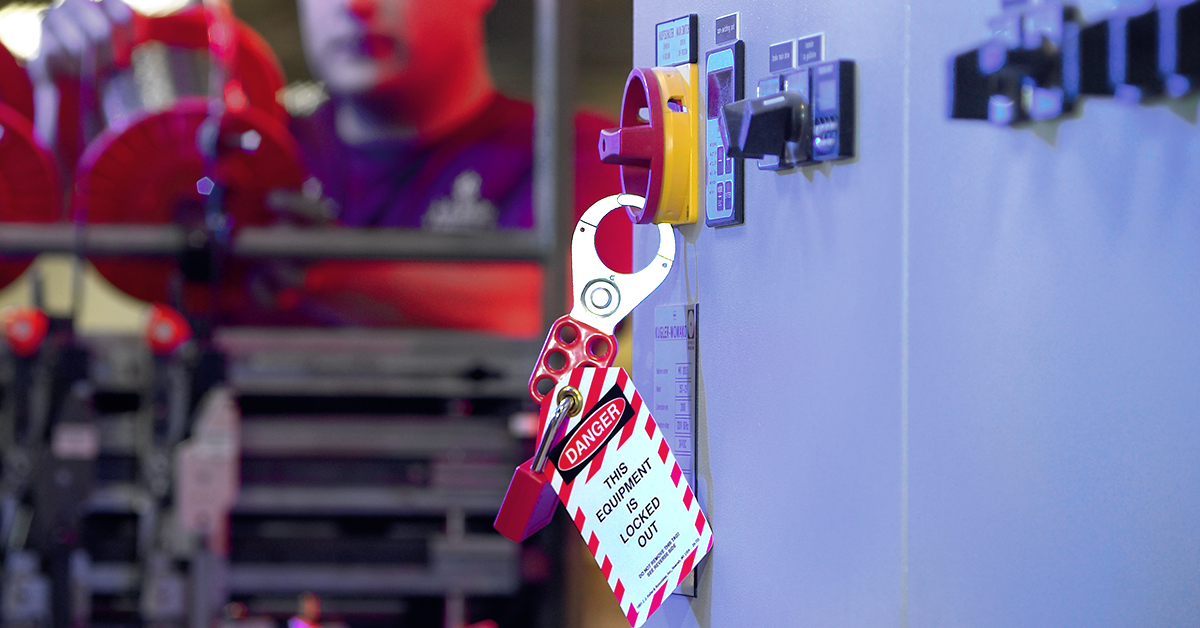Power buttons not energy isolating devices
Date Posted: 11/25/2019

The lockout/tagout requirements generally apply if an employee needs to remove or bypass a guard, or place any part of his body into a machine’s point of operation (there is a minor servicing exception in 1910.147(a)(2)(ii), but that’s another article).
The term “lockout” involves, according to OSHA, the “placement of a lockout device on an energy isolating device” under an established procedure. Further, an “energy isolating device” means something that “physically prevents the transmission or release of energy.” Significantly, 1910.147 clarifies that “Push buttons, selector switches and other control circuit type devices are not energy isolating devices.”
This means that simply turning off a machine using a power switch, or activating an emergency stop button, will not normally suffice for lockout. These switches typically interrupt a control circuit, which does not meet OSHA’s definition for an energy isolating device. Of course, an electrician might be able to assist in either installing an appropriate disconnect switch or determine whether the current switch meets the OSHA definition.
Trying to simplify lockout procedures, some employers have applied creative thinking regarding power switches, but responses from OSHA have usually rejected these efforts.
Locking power switches
One employer asked about installing a bracket to a power switch, allowing it to be locked while in the “off” position. Responding to this idea in a letter of interpretation from 2003, OSHA said this “may be acceptable” but only if the switch is an energy isolating device that physically prevents the transmission of electrical energy. As noted, that’s usually not the case.
In addition, OSHA mentioned that installing a locking bracket would be a modification to the electrical box, likely resulting in a violation of Subpart S, Design Safety Standards for Electrical Systems, unless the change was “approved” (as defined in 1910.399) through independent third-party testing.
Exclusive control?
Another employer noted that lockout requirements don’t apply if equipment is controlled by unplugging it, and the plug is under the exclusive control of the employee doing the service. So, the employer asked whether the “exclusive control” exception could apply when a power switch was under the control of the employee doing the maintenance.
Responding to whether flipping a power switch would be similar to “unplugging” equipment, OSHA issued a letter from 2000, stating that the cord and plug exception does not apply to on/off switches, and that expanding that “exclusive control” provision to those switches would require a new rulemaking.
How Safety Management Suite Can Help
Scenarios involving injury recordkeeping are among the most common questions sent to our experts, and we get hundreds of questions every month, so we’ve seen a lot of different situations. Send your questions using the Expert Help tool conveniently linked from the homepage dashboard of the J. J. Keller® SAFETY MANAGEMENT SUITE. Expert Help gives you direct access to our trusted team of in-house experts — acknowledged leaders in the safety, regulatory and compliance fields with over 500 years of combined experience — who are standing by to help answer your toughest compliance questions.
E-mail Newsletter
Sign up to receive the weekly EHS Insider email newsletter for safety articles, news headlines, regulatory alerts, industry events, webcasts, and more.